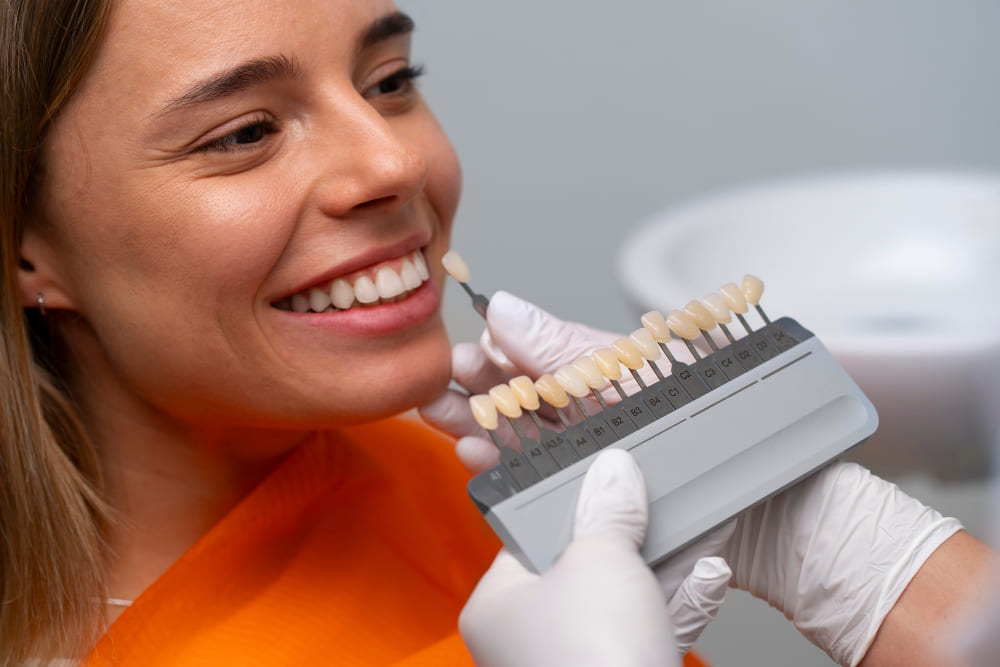
Enhancing one’s smile and boosting self-confidence begins with considering dental veneers. A critical decision after that involves selecting the appropriate material.
Composite resin and porcelain are prevalent options. When crafted by skilled dental professionals, both can produce exceptional aesthetic outcomes.
This article will comprehensively compare composite and porcelain veneers, examining factors such as durability, cost, and aesthetic qualities to assist you in making informed choices.
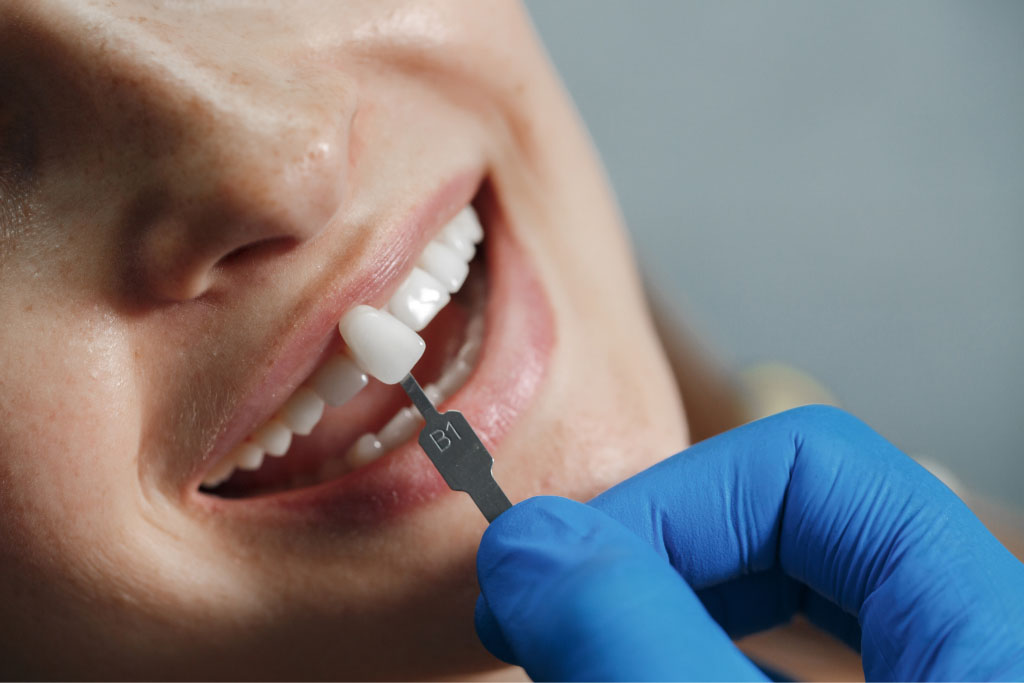
Source: Skye Dental Penang
Porcelain veneers are wafer-thin, custom-made shells crafted from tooth-coloured porcelain. These shells cover the front surface of your teeth, transforming their appearance.
To achieve the desired look, a dentist typically removes a thin enamel layer before bonding the porcelain veneer to the tooth’s surface. This process creates a seamless and natural-looking result.
Composite Veneers
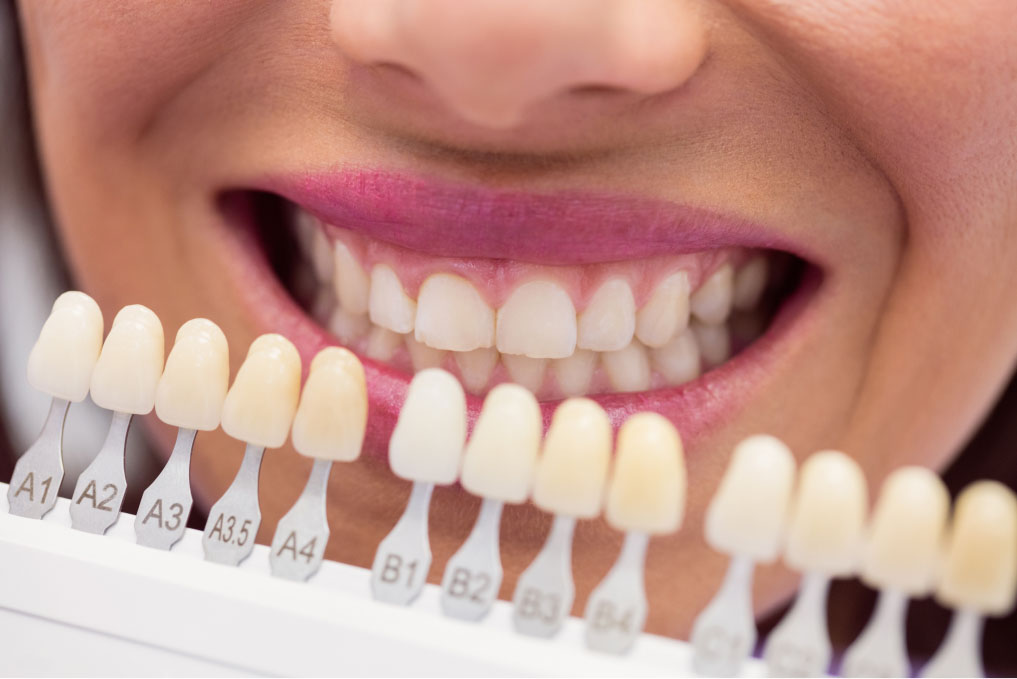
Source: Skye Dental Penang
Similar to porcelain veneers, composite veneers are thin layers of resin bonded to the front of teeth. Carefully matched to the natural tooth colour, these veneers effectively conceal imperfections such as stains, gaps, and minor irregularities.
Modern injection moulding techniques allow for precise application, covering the tooth’s surface without invasive properties.
Renowned for their pain-free treatment and natural-looking results, composite veneers have become famous for achieving a flawless smile, favoured by many in the entertainment industry.
What Dental Issues Can Veneers Address?
Veneers are a versatile cosmetic dental treatment that can effectively address various aesthetic concerns.
Some common dental and cosmetic issues they can help with include:
- Chips and cracks: They can restore the appearance of damaged teeth.
- Discoloration: Veneers can mask deep-seated stains that don’t respond to teeth whitening treatments.
- Gaps: Veneers can close unwanted spaces between teeth.
- Misalignment: Minor misalignments can be corrected with veneers.
- Tooth wear: Veneers can restore the appearance of teeth worn down by bruxism or erosion.
- Uneven or misshapen teeth: They can create a more uniform and symmetrical smile.
Though veneers are excellent for cosmetic improvements, they are not suitable for severe dental problems like tooth decay or periodontitis.
Veneers Vs. Dental Crowns
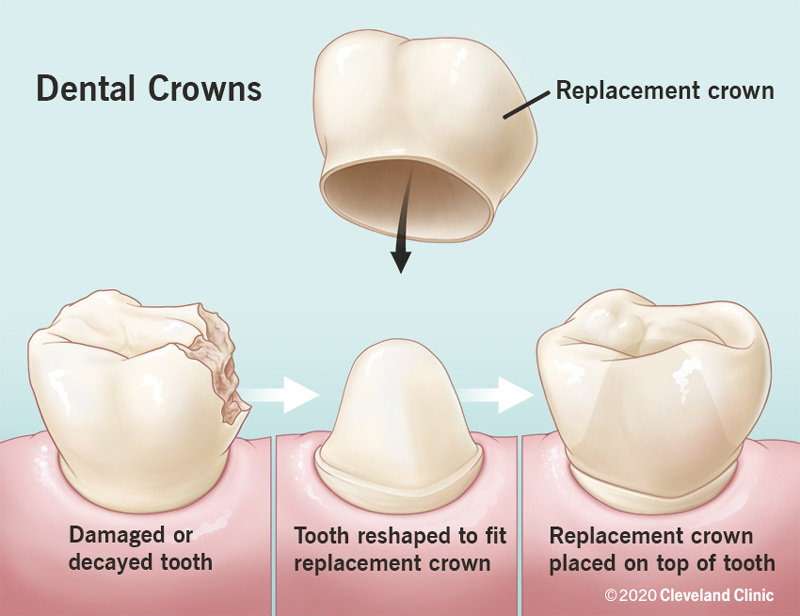
Source: Cleveland Clinic
Veneers and crowns are both dental restorations, but they serve different purposes.
Veneers are primarily aesthetic, designed to enhance the appearance of the tooth’s front surface while addressing cosmetic concerns.
In contrast, dental crowns encompass the entire tooth, providing aesthetic and structural benefits.
Dental crowns fully encase a tooth, providing strength and protection while improving its appearance. They are indicated for teeth with extended damage, decay, or structural compromise.
Embarking on orthodontic treatment? Check out this article on 7 Must-Know Insider Tips to Consider Before Getting Braces to help you navigate the path to a straighter smile.
Pros and Cons of Porcelain Veneers
Porcelain veneers offer a transformative solution for enhancing your smile, but it is essential to weigh the pros and cons before making a decision.
Here’s a breakdown of it to help you understand the potential benefits and drawbacks of this cosmetic treatment:
Pros and Cons of Composite Veneers
Composite veneers are a popular cosmetic dental treatment, but they have advantages and disadvantages, like any procedure.
This overview will help you determine if they are the right choice for you.
Composite Veneers Vs. Porcelain Veneers (Side-by-Side Comparison)
Your best choice will depend on your needs, budget, and lifestyle. It’s essential to consult with a qualified dentist to determine which option is right for you
Considering Invisalign to straighten your teeth? This guide provides essential information for a successful orthodontic journey.
How Do I Choose The Right Veneer?
Choosing the right veneers offers an excellent option for individuals seeking to enhance the beauty of their smile. However, it involves several factors, such as:
1. Cost
Budget is a crucial factor when considering veneers. Given their cost, selecting a type that aligns with your financial plan is essential.
2. Dental Needs
Optimal oral hygiene is crucial for the success of veneers. Therefore, treating any underlying dental issues, such as gum disease or cavities, is essential before veneer placement.
3. Aesthetic Goals
Another factor to take on is your aesthetic and functional goals. Your lifestyle should also be considered to determine the necessary durability of the veneers, factoring in habits like teeth grinding or participating in sports.
4. Dentist Recommendations
Your dentist will comprehensively evaluate your oral health, facial structure, and desired outcome. Based on your specific needs and budget, they will recommend the most suitable material, either porcelain or composite, for your veneers.
Other Types of Veneers to Consider
While porcelain and composite veneers are the most common, there are other options available in the market:
1. No-Prep Veneers
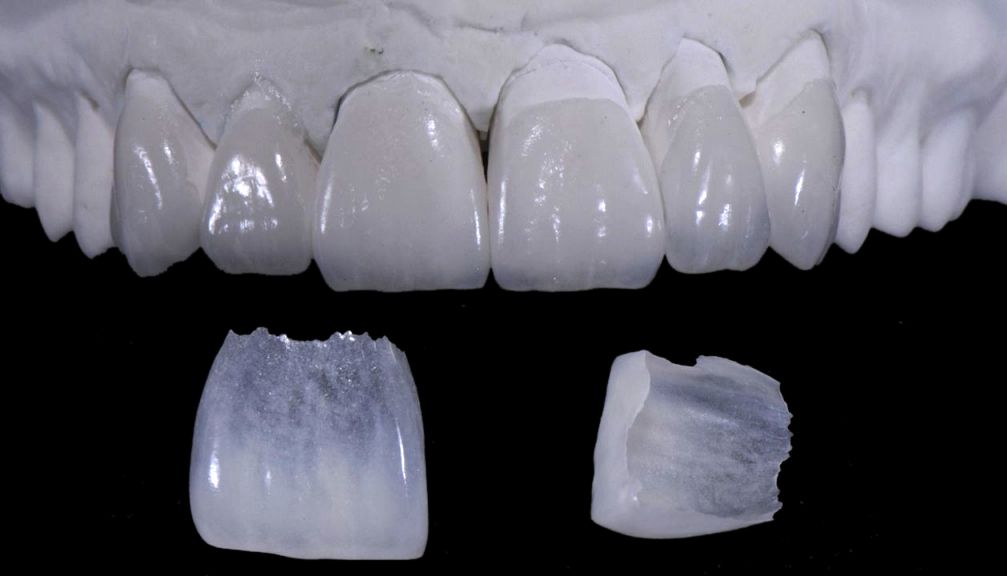
Source: Style Italiano
No-prep or minimal-prep veneers offer a less invasive approach to enhancing your smile than traditional veneers.
While both types are custom-made, no-prep veneers require no removal of tooth enamel. However, some enamel reduction might sometimes still be necessary.
Not everyone is a suitable candidate for no-prep veneers, so it’s essential to consult with your dentist to determine your eligibility.
2. Removable or Temporary Veneers
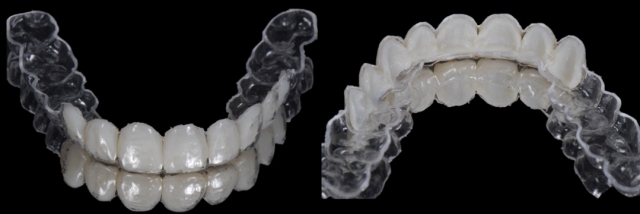
Source: Spear Education
Removable veneers are non-permanent restorations that cover natural teeth to conceal imperfections. Similar to retainers, they can be removed and replaced.
While they offer aesthetic benefits, their impact on speech and eating may be detrimental. Due to their relatively recent introduction, comprehensive research on their efficacy and potential side effects remains limited.
It is advisable to consult with a dental professional to assess suitability and discuss alternative options.
Conclusion
Having thoroughly explored the advantages, processes, and costs of composite and porcelain veneers, you’re now equipped to make an informed decision.
Still unsure about the best option for your smile? Skye Dental in Penang offers expert cosmetic dentistry services. Our team can guide you in selecting the ideal veneers to enhance your appearance.
Schedule a consultation to discuss your goals and receive a personalised treatment plan.
Ready to embark on your journey to a transformed smile? Contact us today to schedule an appointment.
FAQ
1. What type of veneers last the longest?
While porcelain and composite are the most common types of veneers, there are additional options that offer better levels of durability and aesthetics when properly maintained:
- Zirconia veneers
These veneers are renowned for their exceptional strength and resistance to chipping or cracking.
They are often the preferred choice for patients with teeth grinding habits or those seeking maximum durability.
- E-max veneers
E-max veneers balance strength and aesthetics as they are less likely to chip than composite veneers and offer a longer lifespan. However, it might not be as durable as zirconia in extreme cases.
2. Can you tell if someone has porcelain veneers?
It’s challenging for most people to tell if someone has porcelain veneers definitively. When done well, they look incredibly natural.
However, there are a few subtle signs that might indicate the presence of veneers:
- Excessive whiteness
- Unusually perfect teeth
- Teeth are unusually opaque and lack translucency
That said, advancements in dental technology have made it increasingly difficult to distinguish between natural teeth and high-quality veneers.
3. How many times can you replace porcelain veneers?
The number of times you can replace porcelain veneers depends on the remaining tooth structure.
While porcelain veneers can last 10-15 years, they may eventually require replacement due to wear and tear or changes in your smile goals.
However, each replacement reduces the amount of tooth enamel, limiting the number of times this process can be repeated.
Consult with your dentist to assess the health of your teeth and determine the viability of replacing veneers.
4. Can you replace composite veneers with porcelain?
Yes, you can replace composite veneers with porcelain veneers. In fact, it’s a common procedure.
Porcelain veneers are generally considered an upgrade due to their superior aesthetics, durability, and stain resistance.
The process involves removing the composite veneers and preparing the teeth for the placement of porcelain ones.
5. Does removing composite veneers damage teeth?
Removing composite veneers might causes minimal damage to your teeth. Unlike porcelain veneers, which require more extensive preparation, composite veneers often require minimal to no removal of tooth enamel.
However, it’s essential to have the procedure done by a skilled dentist to ensure the removal process is performed carefully to protect your tooth structure.
6. Can you go back to natural teeth after composite veneers?
Yes, you can typically go back to your natural teeth after removing composite veneers.
Because composite veneers require minimal to no tooth preparation, removing them usually doesn’t cause significant damage to the underlying tooth structure.
7. Is it hard to eat with composite veneers?
Eating with composite veneers is generally relatively easy as they are durable and withstand the pressures of chewing.
However, avoiding tough foods like nuts or hard candy is advisable to prevent chipping or damage. Like natural teeth, it’s best to use your back teeth to bite into tough foods.
Overall, with proper care, composite veneers should allow you to enjoy various of foods without significant restrictions.



